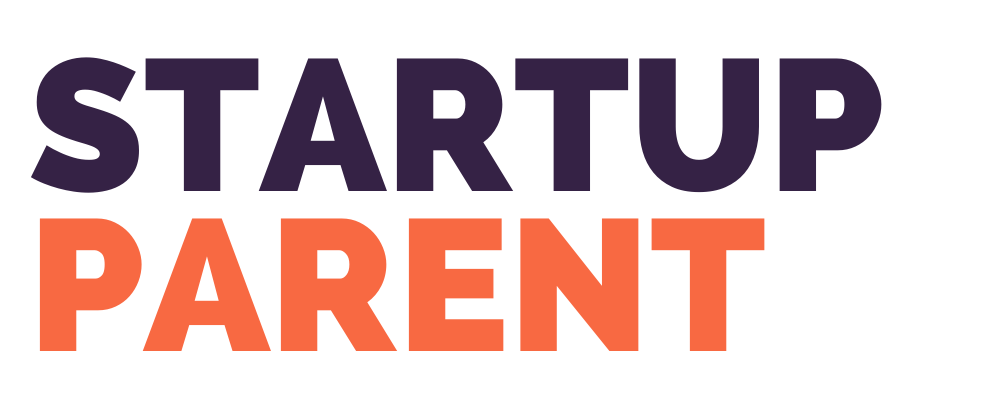How to Think About Leadership During Times of Crisis
When I envisioned being a CEO and leading a team, I didn’t fully know the scope of demands that would come with the role. Leadership today includes facing the ongoing crises of our generation: a pandemic, ongoing wars, gun violence, racially-motivated hatred, domestic terrorism and years of civil and global unrest. Part of the work of leadership involves dealing with big events, and leading your teams and people through hard times.
Last year I put together a framework for how to think about showing up as a leader, and the degree of emotional vulnerability and bravery it asks of us. I circulated this framework within The Wise Women’s Council, our leadership incubator. We had deep conversations about leading companies, raising kids, and about leadership in times of stress, adversity, and trauma.
In this post, I want to share the leadership framework I use for my own work, as it’s continued to be relevant in guiding our team and in our incubator. This is still a work-in-progress, and I hope it’s helpful to you in your own leadership journeys. Build upon it if it’s useful, and feel free to share it with others who might benefit from it.
LEADERSHIP AND COMMUNICATION IN TIMES OF CRISIS
There are two components of leadership advocacy and individual growth that I want to share today. This is a two-part series that first looks at how to develop your own leadership framework, and then talks about shoring up resources to support yourself emotionally and personally.
- Part 1: How to develop your own frameworks for showing up in public as a leader.
- Part 2: How to support yourself as a leader, and the emotional processing and leadership building work that you embark on as you grow in your leadership capacity.
In this post, I’ll share my the framework I use for thinking about showing up for the team, company, and values I believe in, especially around times of crisis. I hope this supports you in developing your own working notebook. I would love to hear your reflections about what works for you or your team, what you’ve learned from others around you, and how you run your own organizations.
In another essay to come, I’ll talk about why taking time and space to process your own feelings is essential to maintaining your capacity as a growing leader, and why it’s so hard to do when there is a cloud of pressure for people to form a public response and reply instantly in a 24/7 media world. Finding how to speak up and use your voice in a noisy, overwhelming, urgency-based world is hard. it’s important to support yourself and ground yourself in your own processing.

1. There is no right way.
There is no “right” way to be a leader. You can’t—and won’t—be a perfect leader. The idea of perfectionism is a trap that keeps people from speaking up at all, and the fear of doing something “wrong,” can keep a lot of people silent. If you’re being quiet because you’re not sure what to say yet, it’s okay to continue to workshop your ideas and gut-check them with other wise people. If you’re quiet because you’re stuck in the perfectionism trap and you know you want to speak up, but you’re afraid to—do speak up and say something. There isn’t one right way to lead.
It might seem like there are tons of examples of companies being clueless or tone-deaf, but the reality is it’s mostly egregious errors that are maligned. But here’s the rub: we can’t let the fear of getting this wrong keep us from doing anything at all. There’s no right way, and, you don’t have to have all the answers.
What is needed is the desire to be a strong leader, the commitment to creating a safe and inclusive work environment, and the willingness to get some things wrong in your pursuit of doing better. Getting something wrong isn’t the end of the line, it’s where the real learning happens.
2. It’s okay to wait at least 48 to 72 hours to respond publicly.
News rooms and social media focus on breaking news and instant takes, but many small businesses, companies, and individuals are not breaking news media organizations, and it is probably a good idea to breathe (a lot) and pause before saying something. Almost everything is better after one night of sleep, if not a few nights.
Almost everything is better after at least one night of sleep.
I know so many leaders and organizers who work overnight to craft statements in real time, and my sense is that this is a long-term recipe for burnout. If your company is not in the business of 24-hour news cycles, or you don’t have a staff or team dedicated to immediate responses, then don’t set yourself up to be a breaking news organization. Take at least a full 24 hours before saying anything, and put a note on the calendar for when and where you’ll share. It’s okay to establish that you’ll take 72 hours before replying, especially if it gives you the space and commitment you need to do the work of showing up.
Here’s a great example of Brene Brown talking about taking time to respond when a big issue came up that needed her attention. “I have a habit of taking long pauses to think about a question or an answer,” she wrote. She took the time to learn more, to listen deeply, and to spend time looking at many components of the puzzle of online misinformation and censorship before making a quick comment or decision.
The exceptions to this are checking in on your team internally and cancelling events (internally and externally). In the instance of a major disruption or news cycle, giving people the option to cancel or quit — and setting this up quickly — is important. It’s also best to do this as part of #3, building a consistent framework for how and when to show up.
3. Develop a consistent practice and a rubric for how and when you’ll show up.
If we’re only ever in reaction mode, we lose our power to take a stand for something and create action that moves the needle forward over time. In fact, I think putting people into a position of constant reactivity can unseat some of the energy and power you need to draw on to do the work. So much of the work of change is about showing up consistently, when it’s not popular, when it’s unseen, when it’s thankless, and continuing to wear down the statues of -isms that are built into the world we live in.
Creating a framework for how you show up can include:
- Knowing how and where to get the support YOU need. Leadership is lonely, and having space to emotionally process (not in public!) with trusted advisors, peers, therapists, or partners is essential. The more you can outline this as a practice, the better. More on that here.
- Hiring experts to support you and counsel you on matters of diversity, equity, inclusion, and communications. Having a team in place to review messages can support you by reviewing context and content.
- Identifying the people in your concentric circles of influence that need your support: Who looks up to you, needs you, and leans on you? Which members of your team are subject to consistent misogyny, racism, discrimination, or other forms of harm — and therefore may need additional resources, support, or space when tragedies happen?
- Knowing what you speak out about, to whom, and when — and, knowing what don’t you speak out about. Having a core set of principles and practices, or policies or guidelines in place will help you determine your next course of action.
Working on developing your framework can be more important than standing up in the moment. Yes, leadership involves reaction, but it’s important to react in a way that is supportive for the people you lead. This takes planning and long-term vision. If you don’t have a framework in place, start to pencil one in as a work-in-progress, and reflect on how it supports you and those around you each time big events unfold.

4. Tell people what to expect from you (and not just in times of crisis).
I’ve shared with my coaches and team that it takes me at least 48 hours to respond to most things (at the very fastest — in most cases, it’s at least a week or two for replies). Having transparency in the process can be really grounding and helpful because people know what to expect from you. They also know that you’re not silently sitting there. Be as transparent and open as you can about your process and what people can expect from you.
In our responses at Startup Parent, we focus internally first on our team, staff, and clients — and check in with them as a first layer because that’s where we can provide support that reaches a wide audience. By supporting leaders and parents, we can create more ripples of positive impact in communities that extend beyond ours.
There is no shortage of causes that need attention. We know that we can’t do it all, and, that we aren’t best equipped to speak about everything. Our focus as an organization is about supporting maternal health equity, advocating for paid leave, supporting reproductive healthcare for all, and supporting mothers and children who are most harmed by the systems of oppression that exist in the United States today.
The majority of our communications happen internally, directly via Email, Slack, and Voxer. Our external communications come via Blog and Social Media. When we use social media as a slower speed, and focus on these angles:
- Amplifying voices of others already leading the conversation.
- Focusing on how the issue affects people within our communities, specifically as it relates to leadership, entrepreneurship, and parenting.
- Highlighting issues related to gender and parenting equity.
5. Your community or organization does not need to be the place for all the answers to every problem.
When I’m feeling paralyzed or overwhelmed, it’s often because I’m trying to take on too much, or we’re trying to solve too much as an organization or as an individual. It’s important to understand that we all have a part to play, and being a part of a larger movement is essential. Your community or organization does not need to be the place for all the answers to every problem—nor can it solve all problems.
If everyone tries to solve everything, nothing will happen.
We also can’t solve all problems on our own, so learning how to bite off the right amount, and when to join forces and support others, is all part of the work. If everyone tries to solve everything, nothing will happen. We need people focused and dedicated for the long term on core issues, and together we can make big change.
6. Stay in your zone of genius as best you can.
In my work, I focus on building connections and relationships between people, expanding women’s leadership, and parenting. To that end, I’ll find the intersection of advocacy and activism within the communities I’m serving, and do my best to find the through point where we can have an important conversation within the framework of the work we do.
Having a conversation about what it looks like to be a leader in times of crisis is within my wheelhouse. Being a therapist or an emotional processing center for thousands of people is not my expertise, nor is it the right call. I am not an expert in matters of racism or gun violence, but I can point you to the people I learn from, amplify experts, share resources, and start conversations about how we can work to influence change in the system.
7. Amplify other people’s zone of genius.
Trying to be the expert for everything is a symptom of perfectionism and a recipe for burnout. It is okay not to know all of the answers. It is silly to assume you can become an expert in complex issues over night. It’s okay to tell people you’re learning and listening. Yes, read. Yes, learn. Yes, grow. Examine your own biases and assumptions — but amplify other people first when they are speaking from their zone of genius.
Trying to be the one with all of the “right” answers can also discourage your team from innovation, as they look to you as the source of answers instead of to themselves and each other for process and problem-solving capacity. Knowing your limits is a critical part of leading by example.

8. Know that people process, hurt, and heal differently.
Asking people to process, respond, or react the same way I do is not helpful — and it’s not fair. Everyone is coming to the table from a different place, has a right to their own reactions, and if they need space and time away because information is triggering or overwhelming, that is absolutely essential. Listen for those that need space and time, and do your best to give it. Let people lead themselves as they need. Give options for people to respond in different ways, and heal in their own ways.
Just because I show up in one way does not mean other people need to show up in the exact same way. Some people need to grieve. Some people need to learn. Some people need to listen. Some people need to challenge the edges of their comfort zone. I am not the expert in how everyone needs to show up, nor do I know all that’s going on behind the scenes.
9. Pay attention to power dynamics.
As a leader of an organization, asking people you serve or lead to be your emotional processing center is inappropriate, and centering your own feelings and reactions is not helpful. To that end, I share my stories and feelings as examples only, but not from a need to be resolved or cared for in spaces where I’m the facilitator, organizer, or leader.
Power dynamics extend beyond the structural hierarchy of your organization — they also involve race, class, ability, heteronormativity, and so much more. One example I often see is white people and white women asking Women of Color and Black women to do extra work to train, support, or respond to their leadership or activism efforts.
When combined with power dynamics—like managers and leaders asking people of color or parents or women or trans people to take on the added work of teaching others about their oppression—this creates more harm. This places an added burden on the folks who are being asked to step up, especially if they are in the midst of processing their own grief or trauma. Speaking from my own experience, this is something to stay attuned to as a white, able-bodied, cis-gendered woman.
10. Do not center yourself.
Notice and observe where you have space to feel your own feelings, and where you’re creating space for other people to feel their feelings. Putting the focus on my own feelings and processing is not the purpose of the community spaces I’ve built — the focus is on participants sharing their own feelings, reactions, and processes in a guided container.
It’s not something I always get right, and it is an ongoing practice. In pursuit of learning, when I reflect and realize that I’ve been centering myself or asking more from others, we use the “rupture and repair” model to focus on healing when something has been breached. It is not about behaving perfectly, it is about understanding how to move forward and heal when rupture happens. Owning my mistakes and circling back to check in on people is an ongoing practice.
In the Wise Women’s Council, we have a peer coaching group for our coaching staff, where all of the coaches share a private space to talk to each other support each other through challenging issues. We each bring issues to the support of our team, and we can each provide each other support and space to learn where our edges are. This allows us to show up for the larger group after we’ve processed our own feelings, so that we can hold space for the people we’re leading.
“It is not about behaving perfectly, it is about understanding how to move forward and heal when rupture happens.”

11. Listen.
Adopt and use active listening postures where it’s most appropriate, and grounding postures where it’s most appropriate. Active listening can include not speaking up but instead amplifying other voices; it can be reaching out 1:1 and asking people how they are doing, and it can take many other creative forms. Spending time deeply listening to people’s experiences is one of the greatest gifts we can give.
12. Use grounding practices when appropriate.
The containers and spaces we are in often feel good because the builders have, at the core, created a solid infrastructure and a grounding quality to the space. “Grounding” can feel deeply stabilizing and reassuring. Having someone speak in a direct manner, in a solid tone, without asking too many questions can feel like relief. It’s reassuring to know that someone else is holding a container—and that someone else is taking responsibility and is in charge.
At times, you’ll be called to ground by stating an opinion, sharing your perspective, sharing your process, and telling people what to do. It’s okay to tell people what to do in a balance with all of the other notes here. (This is the subject of another post, but acting with authority and integrity is different than being an authoritarian.)
Being in charge is a kindness. Sometimes, leaders will unconsciously abdicate responsibility when things are tough or when they’re not sure how to proceed. Tell people what to expect, even when you don’t know all of what’s happening. “I’m aware of what’s going on, and I’m listening and learning. I’m going to take a day or two to write some thoughts and establish a guideline for conversations,” is a way to communicate clarity even when there is uncertainty. It can be a relief to know what the person in charge is thinking and doing, even if it’s taking time to respond, learn, and grow.
13. Do the more important (often invisible work).
Don’t do it for show, do it because it matters. Have a framework for what you focus on, who you support, and how you speak up. If you don’t have a practice for how you show up, being reactive and trying to do everything can leave you exhausted and burned out.
Trying to do it all results in paralysis and overwhelm. Making change requires digging in, staying focused, and staying the course. Strive to have your advocacy be integrated into your life—proactive, recurring, and abundant. Find organizations that you can add leverage to, vote to change legislation, and decide what causes or people you will actively be involved in. For me, it’s better to pick two or three things and set up a lifelong monthly donation than do one-offs whenever I feel the emotional tug.
LEADERSHIP IS CHALLENGING WORK.
When I was younger, I thought that being the boss or the manager would mean things would be easier. It looked so cool to be in charge—surely, it was fun and easy to boss people around, right? Once you had the power, you could make the rules—or so my five-year-old self dreamed.
But that hasn’t been the case, at least not in my experience. Being in a leadership position asks you to come up with answers and frameworks when they don’t exist. It asks you to take risks and lean into bravery. It means you’ll often be unsure, or you’ll be wrong. I’ve been called out and called in and challenged so many times, and each time I’ve had to look further inwards and ask more of myself. There is so much I don’t know. The risk of failing is part of the job of leading. But doing nothing or giving up is worse.
Learning is ongoing, for life.
Keep going and keep growing.
Being in a leadership position asks you to come up with answers and frameworks when they don’t exist. It asks you to take risks and lean into bravery.
Listen to The Startup Parent Podcast on Apple ★ Spotify ★ Overcast ★ Castbox or wherever you listen to podcasts. Find another podcast player or the RSS feed here.
ABOUT THE STARTUP PARENT PODCAST
If you're growing a business, leading a team, or figuring out entrepreneurship and you have kids, this podcast is for you. We go in-depth with founders and entrepreneurial parents about what it really takes to have babies, grow businesses, and get a little bit of sleep. Sign up for the newsletter to get new episodes in your inbox. And leave us a review on iTunes.
Listen to The Startup Parent Podcast on Apple ★ Spotify ★ Overcast ★ Stitcher ★ Castbox or wherever you listen to podcasts. Find another podcast player or the RSS feed here.
